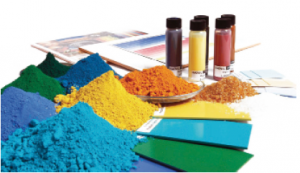Flame retardant for powder coatings

Flame retardant thermosetting powder coatings are mainly made by adding 1-10% of the total amount of flame retardant to conventional cyclopolymer powder coatings or polyester powder coatings, taking the flakes extruded from the extruder for direct combustion to determine the oxygen index, and evaluating it with reference to GB 2406-1993. And refer to GB 14907-2002 to determine the fire resistance.
The conditions that flame retardants should have:
- High flame retardant efficiency, no or slightly lowering the original physical, mechanical and electrical properties of the flame-retarded material.
- 2. The flame retardant should match the decomposition temperature of the flame-retarded substrate and meet the processing conditions.
- 3. It has good thickness resistance.
- 4. Low migration, that is, it can maintain the flame retardant effect for a long time in the product and does not lose its effectiveness during the service life.
- 5. Good compatibility with the substrate resin and easy to disperse.
- 6. No pollution and low toxicity.
- 7. Reasonable price.
Flame retardants used in powder coatings include chlorinated paraffin, polybrominated diphenyl ether, hydrated aluminum hydroxide, antimony trioxide, zinc borate, etc., in different proportions and total additions. They do not affect the leveling performance of the paint film, and the non-yellowing characteristics of light-colored powders. After testing, the addition of 5% of the flame retardant 749/739 does not affect the leveling. 739 turns a little yellow, and it can automatically extinguish within 3 seconds of ignition. When the addition is more than 10%, it is basically non-flammable; ordinary flakes without flame retardants take more than 30 seconds to extinguish. However, the surface flatness is greatly affected. A large amount of flame retardant affects leveling, yellowing, and environmental protection is not passed (with low toxicity); fire-retardant coatings need to use brominated epoxy resin to solve the problem from the base material.

 D5 Creation
D5 Creation